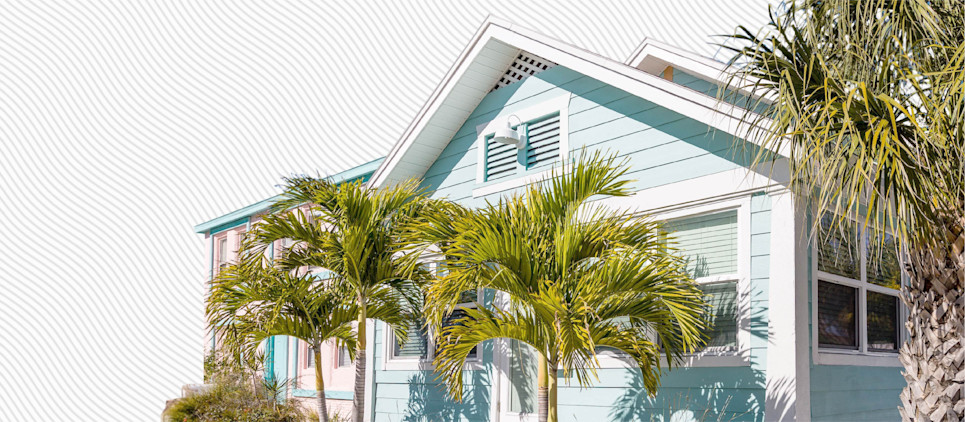What is a bungalow? All about this housing type
So you’re looking at properties in the housing market and you keep stumbling across the word bungalow. It sounds cute, but what does this housing term actually mean? Read on to learn the defining characteristics and origins of bungalow homes, as well as the advantages of living in one.

Table of contents
What is a bungalow?A brief history of bungalowsAdvantages of living in a bungalowWhat is a bungalow?
A bungalow home is a type of house, cabin, or cottage that’s either a single story, or one and a half stories tall. If a bungalow has a half story, it’s typically built into the roof, which is sloped.
Other characteristics of bungalows include:
Low pitched roof: The sloping roof is a characteristic that will help you spot a bungalow and differentiate it from, say, a ranch style home immediately.
Compact footprint: Bungalows are generally known to be small and cozy, with less square footage than typical single family homes.
Open floor plan: All of the living space in a bungalow—including living room, kitchen, dining area, storage, and sometimes even bedrooms—tends to be open, rather than divided into rooms. While not all bungalows have this feature, it’s an integral part of the bungalow’s origin story and its enduring appeal. Single story, open floor plans make construction and utility installation quicker and less expensive, and usually entails less maintenance over time.
Front porch: Many bungalows have front porches to offer their inhabitants additional living space outdoors.
Craftsman architectural style: Bungalow homes are associated with simple designs, fine craftsmanship, and natural materials. Craftsman style architects became enamored with the housing type in the early 20th century, and as a result, many bungalows reflect their aesthetic. They might be stained or painted dark green or brown so that they seamlessly blend into their natural surroundings.
Located in or close to urban areas: Bungalows became—and remain—popular among city dwellers who want more than an apartment, but not a full single-family home. Their small footprint makes them well-suited to cities or their outskirts. This differentiates them from other small dwellings like cottages, which are usually located in rural areas.
A brief history of bungalows
Bungalow houses were originally constructed in Bengal, India, during British rule, perhaps as early as the mid-17th century, where they served as casual residences for ambassadors and travelers. Bungalows were popularized in Britain in the mid-19th century.
Bungalows were popularized in the United States in the early 20th century—especially in Southern California, where LA’s urban sprawl created demand for small single family homes. Because their essential characteristics aligned with the architectural movements happening in Southern California, the bungalow found many advocates among leading voices in architecture and design. From there, the style proliferated across the country, enjoying immense popularity.
In Chicago, bungalows are known as one and a half story homes with a full basement underneath. Designed to reside on narrow city lots, these structures are known to be longer versus wider. They feature brick construction, low pitched hipped roofs with broad overhangs, and porches with steps that ascend from street level.
Bungalows were also a precursor to contemporary pre-fab homes. At the height of their popularity in the 1930s, some companies developed bungalow “kits,” in which everything needed for construction was packaged and sent to the site and assembled by local craftsmen.

Advantages of living in a bungalow
Today, bungalow homes are still associated with their core value of affordability, especially within expensive urban centers. Here are the 3 biggest upsides to living in a bungalow.
Affordability: Because bungalows are compact and usually don’t have many bedrooms, they’re affordable options for those who want their own dwelling structure, rather than an apartment or condo in a big building.
Privacy: In addition to offering more privacy than an apartment, condo, or townhome—all of which share walls with other units—bungalows typically have space on their lots for trees and other landscaping, which can add privacy.
Accessibility: Bungalows’ single-story design makes them ideal for anyone with mobility challenges.
Sharing a home with roommates is a cost-effective way to enjoy urban life. Bungalow’s homes are designed for shared living, located in the best neighborhoods, and take care of the details—like furnishing common spaces, scheduling monthly cleanings, and handling payments. Whether you already have roommates or are looking for new ones, there’s a Bungalow with your name on it. Find your Bungalow.
Ready to find your next home?
Move-in ready homes and a built-in community so you can feel at home, together — wherever you are.
Suggested articles



